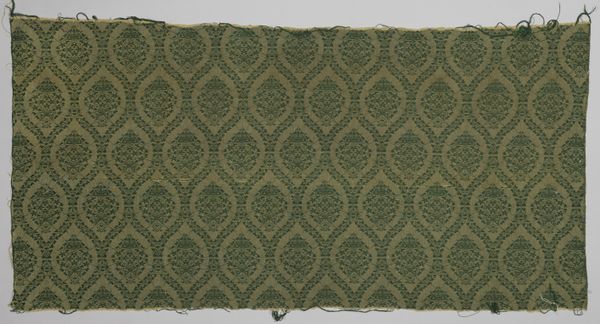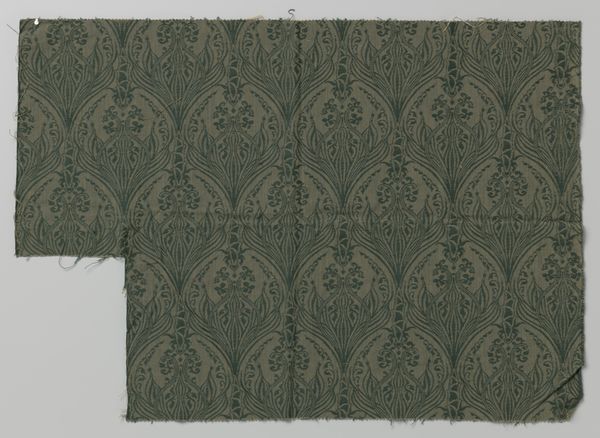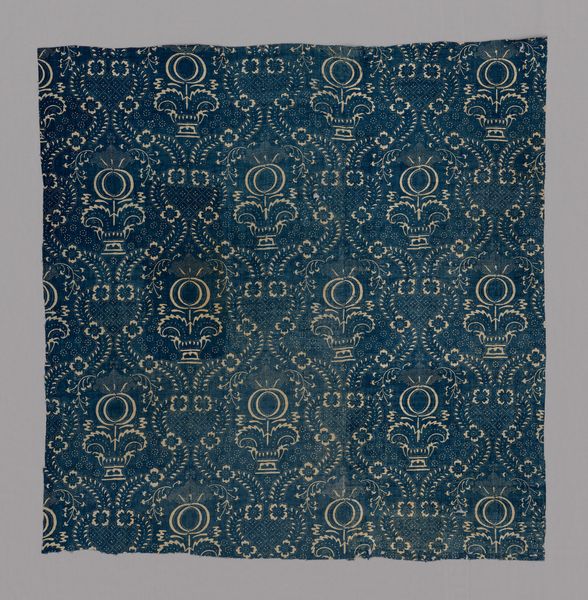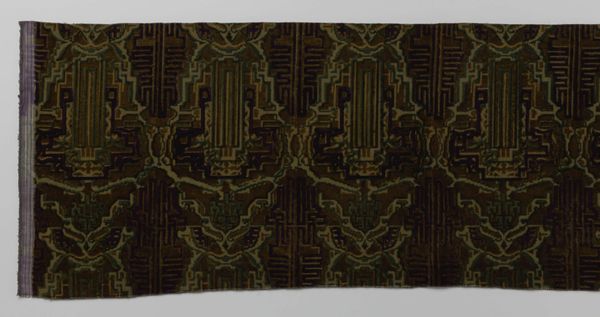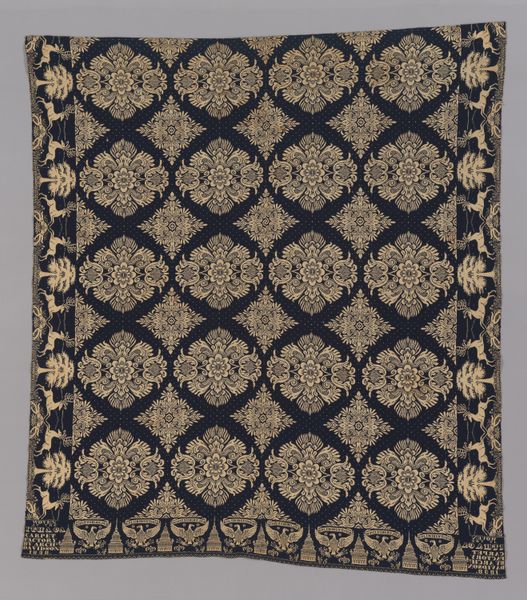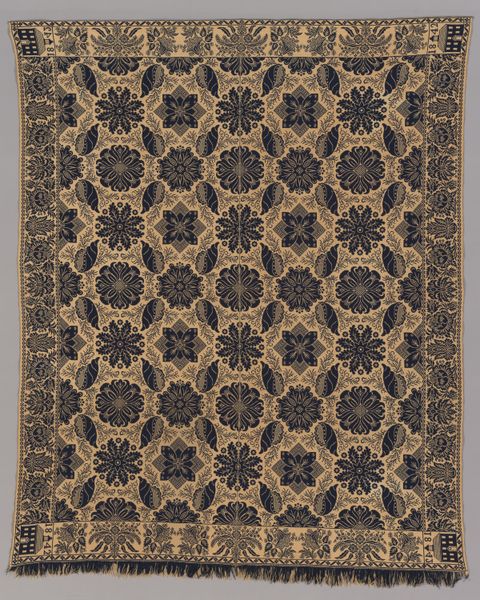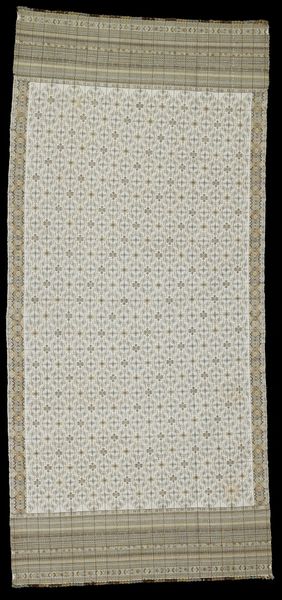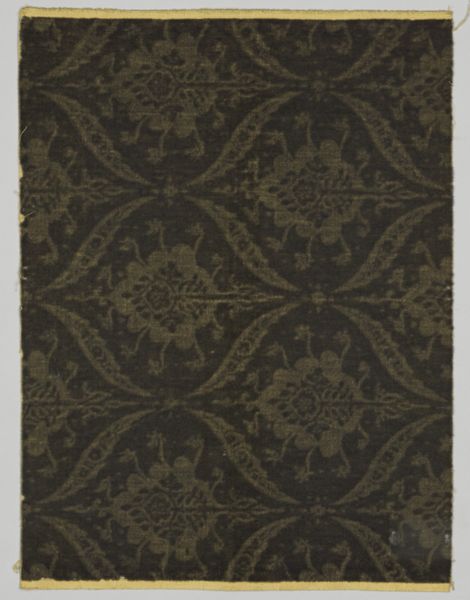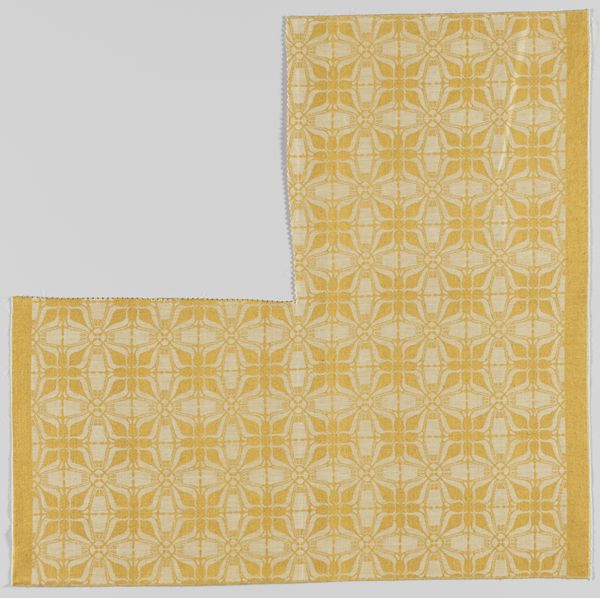
Dimensions: height 129.5 cm, width 122.5 cm, width 1 cm
Copyright: Rijks Museum: Open Domain
Editor: Here we have "Bedrukte trijp met dessin 'Akelei'," a printed furnishing fabric with the 'Akelei' design, made by Theo Nieuwenhuis, circa 1918-1925. Looking at the densely packed pattern, I immediately think of wallpaper, maybe in a dimly lit, opulent room. What's your interpretation of this work? Curator: The 'Akelei' design speaks to the Art Nouveau movement's obsession with nature, but also to something deeper about the social anxieties of the time. Consider the industrial revolution: mass production threatened traditional crafts and altered people's relationship with their environment. How might a design like this – which seeks to replicate natural forms through mechanized production – reflect anxieties about authenticity and labor? Editor: That’s interesting. I hadn't thought about it in terms of anxiety, just a straightforward appreciation of nature. So, the repeating pattern, rather than simply decorative, becomes a comment on industrialization? Curator: Exactly! And what about the intended consumer? Art Nouveau, while striving for beauty, often catered to a privileged class. This printed textile, intended for the home, raises questions about domesticity, gender roles, and the accessibility of art. Was this design meant to empower women within the domestic sphere or to reinforce existing social structures? Editor: Wow, that completely changes how I see it. It’s not just a pretty pattern; it's loaded with meaning about social class, industrial change, and gender. Curator: Indeed! By examining the design’s historical and social context, we uncover layers of meaning beyond its surface aesthetic. Editor: I will never look at wallpaper the same way. Curator: That's the power of contextualizing art—it helps us to understand the past and question the present.
Comments
No comments
Be the first to comment and join the conversation on the ultimate creative platform.
